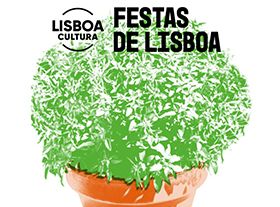The Santiago Route - Braga
The Santiago Route - Braga
Other
The administrative capital of a province that covered regions including Galicia and the Minho and one of oldest bishopdoms, Braga forms the beginning of one of the Routes of Santiago.
This was once a matter of great rivalry as in the 11th century, Braga was struggling to become a more important Christian centre than Compostela. While Compostela guarded various relics associated with the apostle James (Santiago), Braga could answer with relics from martyrs from the times of Romanic persecution (the Saints Silvestre, Susana, Cucuphate and Frutuoso de Montélios), while their churches remained under the jurisdiction of Compostela.
The Route of Santiago closely followed the old Roman ways. Leaving Braga, pilgrims would pass through São Frutoso de Montélios, cross the Cávado river to head to Terras de Bouro and then onto Gerês before crossing over into Spain at Portela do Homem.
The route, known as the Path of the Geira Romana, features various Roman milestones and was but a section on the route connecting Braga to Santiago de Compostela and hence to Rome.
And it is not even necessary to leave Braga to get an insight into the extent of this cult of Santiago.
Start in the historic centre at the Cathedral, head down Rua D. Gonçalo Pereira and then Largo de São Paulo as far as the Largo de Santiago.
There, you can find the Fountain of Santiago, the Tower of Santiago, providing an idea of the extent of the medieval walls. Right by the Tower, there is the Santiago Seminary, a former Company of Jesus building. Continue along Rua dos Falcões as far as the Church and Hospital of São Marcos, one of the most important stopover points on the Portuguese side of the route.
Outside the city, on the EN 201, do not miss the Chapel of São Frutuoso de Montélios, housing relics that were much coveted by Santiago de Compostela, and the Monastery of Tibães, a Benedictine convent that would shelter and aid pilgrims.
Image in GIL, Carlos, RODRIGUES, João, Por Caminhos de Santiago, Publicações Dom Quixote, 1990, page 173
This was once a matter of great rivalry as in the 11th century, Braga was struggling to become a more important Christian centre than Compostela. While Compostela guarded various relics associated with the apostle James (Santiago), Braga could answer with relics from martyrs from the times of Romanic persecution (the Saints Silvestre, Susana, Cucuphate and Frutuoso de Montélios), while their churches remained under the jurisdiction of Compostela.
The Route of Santiago closely followed the old Roman ways. Leaving Braga, pilgrims would pass through São Frutoso de Montélios, cross the Cávado river to head to Terras de Bouro and then onto Gerês before crossing over into Spain at Portela do Homem.
The route, known as the Path of the Geira Romana, features various Roman milestones and was but a section on the route connecting Braga to Santiago de Compostela and hence to Rome.
And it is not even necessary to leave Braga to get an insight into the extent of this cult of Santiago.
Start in the historic centre at the Cathedral, head down Rua D. Gonçalo Pereira and then Largo de São Paulo as far as the Largo de Santiago.
There, you can find the Fountain of Santiago, the Tower of Santiago, providing an idea of the extent of the medieval walls. Right by the Tower, there is the Santiago Seminary, a former Company of Jesus building. Continue along Rua dos Falcões as far as the Church and Hospital of São Marcos, one of the most important stopover points on the Portuguese side of the route.
Outside the city, on the EN 201, do not miss the Chapel of São Frutuoso de Montélios, housing relics that were much coveted by Santiago de Compostela, and the Monastery of Tibães, a Benedictine convent that would shelter and aid pilgrims.
Image in GIL, Carlos, RODRIGUES, João, Por Caminhos de Santiago, Publicações Dom Quixote, 1990, page 173




 Explore
Explore 
 Remember and Share
Remember and Share 


